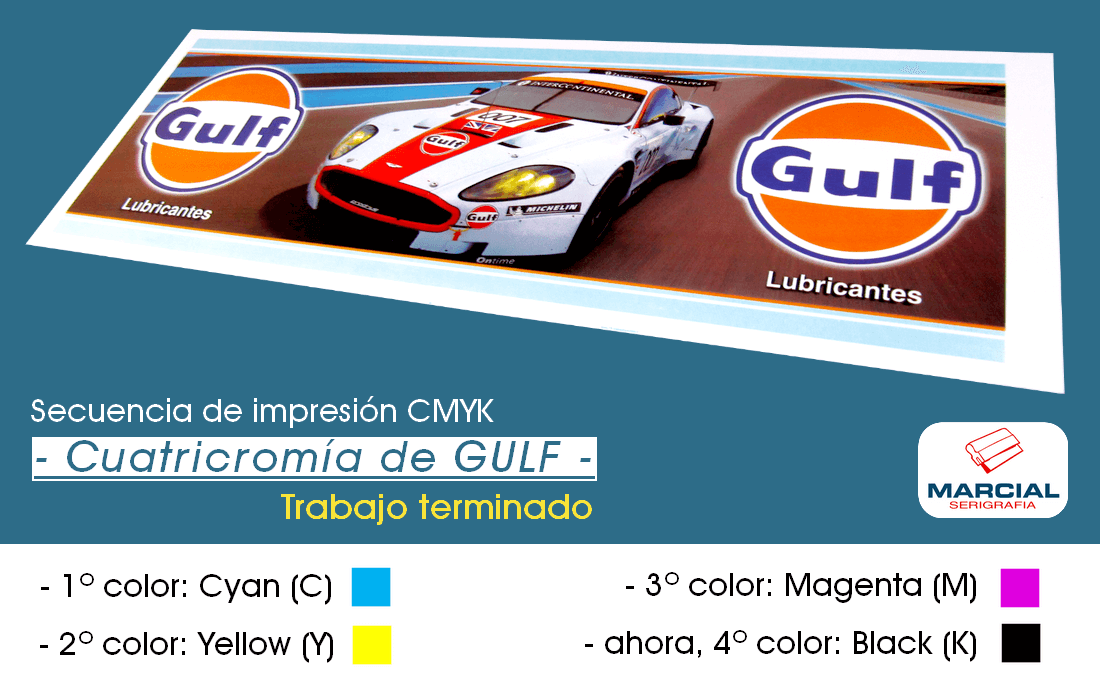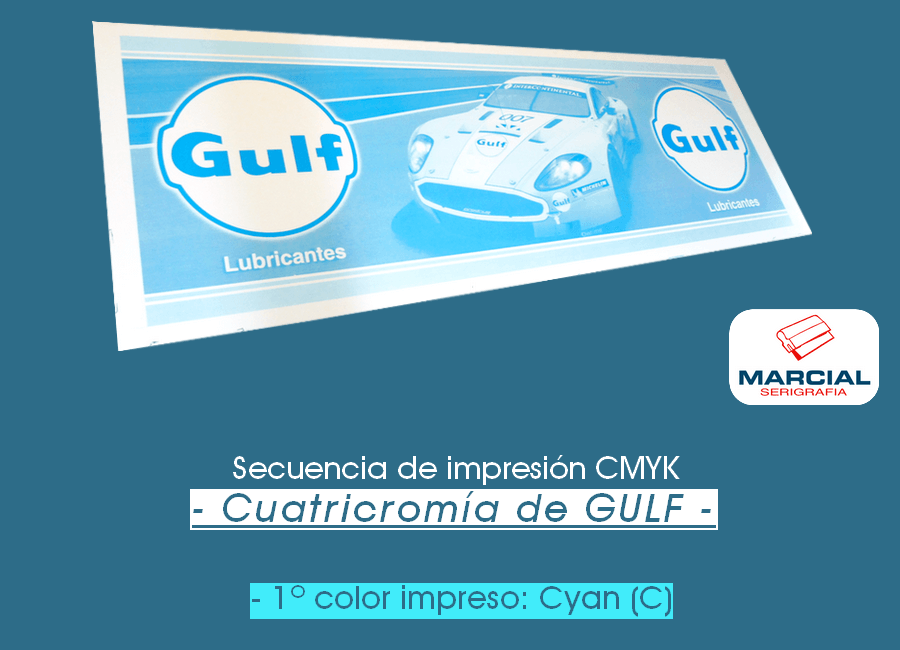Menú→

When we talk about screen printing,
we are talking about a technique, and a way to print on various materials. One of the important points that it has is its great versatility as it can use a varied number of inks.
This is why,
which becomes a single system,
since lasting impressions are achieved.
With a wide variety of inks, we are able to print with good adhesion on many materials, so that at the time of printing we choose the ink that has the best anchorage on the substrate to which we want to apply an image, text or design.


The Silk
(chiffon, mesh, woven, stencil)
It all starts with the choice of silk to usefor the design to be reproduced.
What you see in this image is an enlargement of what a silk screen is like, and what the threads that make it up are like.
The function of this fabric is to retain the photographic emulsion that is going to be applied to the silk, to make what we call "Matrix photograpic copy".
A craft that persists over time.
Serigraphy, Screen Printing or Silk Screen,
are different names for the same printing system.

What is Screen Printing?
The number of threads that this silk contains will be an important point, since it is not only to retain the photographic emulsion with the design, but it will also determine the amount of ink that this fabric will be able to discharge when printing.
The lower the number of threads, the greater the ink discharge. When greater covering power is required, it will not only depend on the covering power that a paint may have or the amount of pigment it has, but it is also essential to have a mesh that achieves the purpose we want to reach, and that is provided by the choice of fabric together with the ink to be used. Now on the contrary, The greater the number of threads that this silk has, the lower the paint discharge will be. That is why when we want to print fine details or very delicate lines, it is necessary to choose this type of silk that allows us to do this, and here the fabric with many threads is idea
After we know what type of fabric is best for us to use, comes the process of making the matrix, copy or engraving on the silk. The matrix will be the one that provides us with the design that we want to print. Obtaining a good copy of the matrix will result in the quality of the print, so a good emulsion with a high solids content will give definition to our matrix and excellent adherence to the fabric, and will be optimal at the time of exposure when the emulsion has burn in the light.
The darkest part is the emulsion that burned when exposed to light. The burnt emulsion on the fabric remains adhered, and blocks the passage of ink at the time of printing.
The clear area is the part where the emulsion was not exposed to light and when it is developed it dissolves, thus leaving the fabric free and allowing the ink to pass through with the design that we see in the image.
The cmyk process is the way in which a photographic image or design can be printed in various colors with 4 basic tones: Cyan, Magenta, Yellow and Black.
The inks in this cmyk printing process are specially manufactured, since by overprinting the four base colors, all the ranges of colors that we can see in a photographic image must be obtained, and here it is necessary that these paints have a certain transparency to achieve all the shades as the colors overlap.
In these images that we put below, we can see how one color interacts with another, the tones and halftones that are formed as production progresses until the final color is reached.
From the experience gained over the years doing this type of work in four colors, we learned that sometimes it is better to "skip" the CMYK printing order, since there are colors that are more resistant and others that are more "weak".
When we talk about resistance or weakness, we mean that there are colors that, when exposed to light, some shades of color are more resistant than others, and when we work with the CMYK process in screen printing, we choose to print yellow as the second color and not the magenta, for two reasons:
The first is that if there are tones such as red or orange in an image (all images have these colors, except in very few exceptions or in cases of monochrome), magenta being a color that is more resistant to light than yellow (Y), it would come to "protect" the yellow when it is overprinted, and this will make it last longer when the print is exposed to light.
And the second reason we find is that by having the cyan color already printed, it is that if an image to be reproduced has some green tones, when preparing the yellow ink we can modify its intensity to achieve those green tones that in some cases are predominant. in an image and thus achieve that the final reproduction is as faithful as possible to the original image. Each job and each image to reproduce/print is particular, and that is why in each printing service we carry out, we take into account all these details
In 90% of the work carried out, we use paints, inks, drying by evaporation.
Vinyl, acrylic and polypropylene inks are the most used in our workshop due to the types of substrates that they bring us to print. But for some specific jobs, we print with UV curing screen inks.
Ultraviolet curing inks (UV) are paints that are formulated with high-viscosity acrylic derivatives and therefore facilitate printing on the different materials used today. The high viscosity mentioned above reacts to ultraviolet radiation emissions and generates what is called and known as POLYMERIZATION, which transforms this UV ink into an element with stability and solidity. This polymerization that we are talking about is very useful because it allows us to perform screen printing on materials that are not porous, and that have the particularity of not absorbing ink.
1º) One of its main virtues is its speed of drying/curing. In evaporative drying inks, it is necessary to wait for the solvents that are integrated in the ink to completely evaporate. In the best of cases, it takes half an hour to dry (it depends on the temperature and humidity present in the environment), but the vast majority of us have to wait several hours for it to dry if we want to be sure of continuing with the process. next color, and not to mention if we talk about stacking the sheets already printed. In UV, the paint cures in seconds. The time it takes for the printed sheet to pass through the head with the ultraviolet light is the time it takes to cure, as seen in the video we posted. At this point there is nothing to argue with and it is simply a considerable time saver. So, this would be the first point to highlight: Curing speed.
2º) Another virtuous point and also extremely important is the sharpness that is achieved with this UV curing system. It is known in screen printing that the medium that makes the transfer between the ink and the substrate, it is silk. The silk is where the master engraving of the design to be printed is made, and this is where there is another important change. If we use the classic inks, a general rule for all workshops is to use a 120 thread count fabric or silk to have a more than acceptable quality in most jobs.
On the other hand, to use UV inks, we have to use finer silks and not less than 150 threads, because this ink has NOTHING to evaporate, it does not lose "size"; that is, it forces us to use finer silks and those of us in this business know that when we want to reproduce very fine details or have greater clarity in a print, we must use high-yield silks. But we also know that with traditional inks it is also possible to work with silks with many threads, but this is where the difference lies: with traditional ink, the solvents evaporate as we print and we have to be cleaning the matrix at all times if we want maintain a certain range of quality, something that does not happen with UV. UV ink, until it passes through the ultraviolet head and cures, will remain intact, it will NEVER evaporate. And since the ink discharge is less due to using finer silks, the printing quality is reflected. In other words, finer silks (with higher numbers of threads) have higher quality in the finer strokes, and for this we obtain greater control over the amount of paint that the silk transfers to the material.
Matricería
Copied/engraved schablon/frame/screen printing





